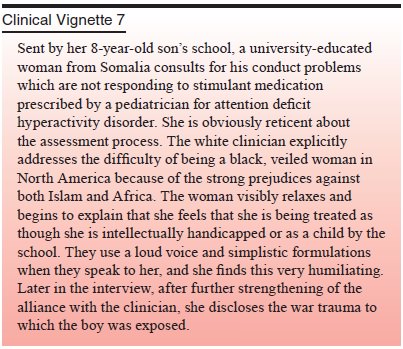Chapter: Essentials of Psychiatry: The Cultural Context of Clinical Assessment
Clinician–Patient Relationship
Clinician–Patient Relationship
The roles of healer, helper and physician differ
across cultural contexts, and patients may have correspondingly different
ex-pectations of their relationship with clinicians, including the duration,
level of disclosure, formality and emphasis on techni-cal competence. These
expectations often need to be explored, with opportunities for patients and
clinicians to negotiate or explain limits to the roles they are able and
willing to adopt. Once these differing perspectives are made explicit, a
culturally appropriate and professionally acceptable relationship and work-ing
alliance can be negotiated.
Clinicians must become aware of their own
ethnocultural background and identity and reflect on how it is perceived by
patients from their own and different backgrounds. The terms“cultural
transference” and “cultural countertransference” have been used to acknowledge
that both patient and clinician may have fantasies and responses to the other
that are based on earlier relationships with others from that culture or on
culturally rooted associations to the other, rather than to strictly personal
charac-teristics (Adams, 1996; Comas-Diaz and Jacobsen, 1991).

Related Topics